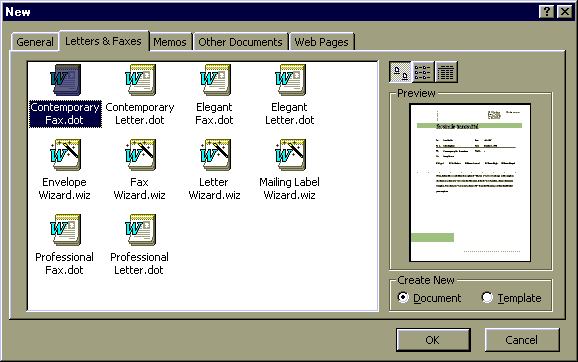
The ability to write effective business correspondence is one of the many reasons people choose to learn how to use a word processor. Business letters and memos have much in common with other types of correspondence: your ideas should be presented clearly and organized around a purpose. Business letters and memos do, however, have their own conventions and format styles. In this concept we present the elements of a good business letter and memo, and provide example formats of both.
First, what is the difference between a business letter and business memo? Normally, a letter is external correspondence between people at different companies and a memo is internal correspondence between people within a company. Therefore, the routing information on a memo can be abbreviated. It's not as important to provide full addresses and titles because generally the addresses are the same and the people familiar with each other.
Before looking at what a good format for a business letter and memo is, it will be helpful to list the elements of a business letter.
The heading. The heading consists of the return address and date. If you are using letterhead stationary with the company name and address at the top you only need to provide the date. It may be tempting to include your name with the heading. If so, resist this temptation, because it is unnecessary and considered poor etiquette.
The inside address. The inside address is the full address of the recipient.
The salutation. The most common salutation or greeting is "Dear" followed by the recipient's title and name, as in "Dear Professor Stach:." Not very professional are salutations such as "To whom it may concern."
The body. The body contains the content of the business correspondence. A business letter is not an essay, research paper, or novel. A business letter is meant to convey a message quickly and efficiently. While you won't find many short paragraphs or bulleted lists in War and Peace, they are quite common in business letters.
The complimentary close. Most business letters close with "Sincerely." For friendly or frequent correspondence "Cordially" might be used. For formal correspondence "Respectfully yours" is sometimes used.
The signature. The signature should contain both the handwritten and typed signature.
Like dress ties, letter and memo formats can be adapted to match the occasion and your mood. The following examples are two safe choices for memos and business letters.
| TO: FROM: DATE: SUBJECT: |
Joe Johnson Jane Jenson December 12, 1996 Virtual University Curriculum |
| As we discussed ... | |
| Address 1 Address 2 December 14, 1996 |
|||
| John Stanford Professor of Computer Science University of Missouri--Kansas City 4747 Troost Kansas City, Missouri 64110 |
|||
| Dear Professor Stanford: |
|||
| During a recent ... | |||
| Sincerely, Eddie Burris |
The two previous examples are good standard formats for business memos and letters. If you need help creating more specialized types of documents, Microsoft Word has a built-in task wizard which you will assist you in the creation of document templates. The task wizard is invoked from the File/New... menu command. From the New dialog box, choose the type of document you would like to create.

Copyright 1996 by the Curators of the University of Missouri